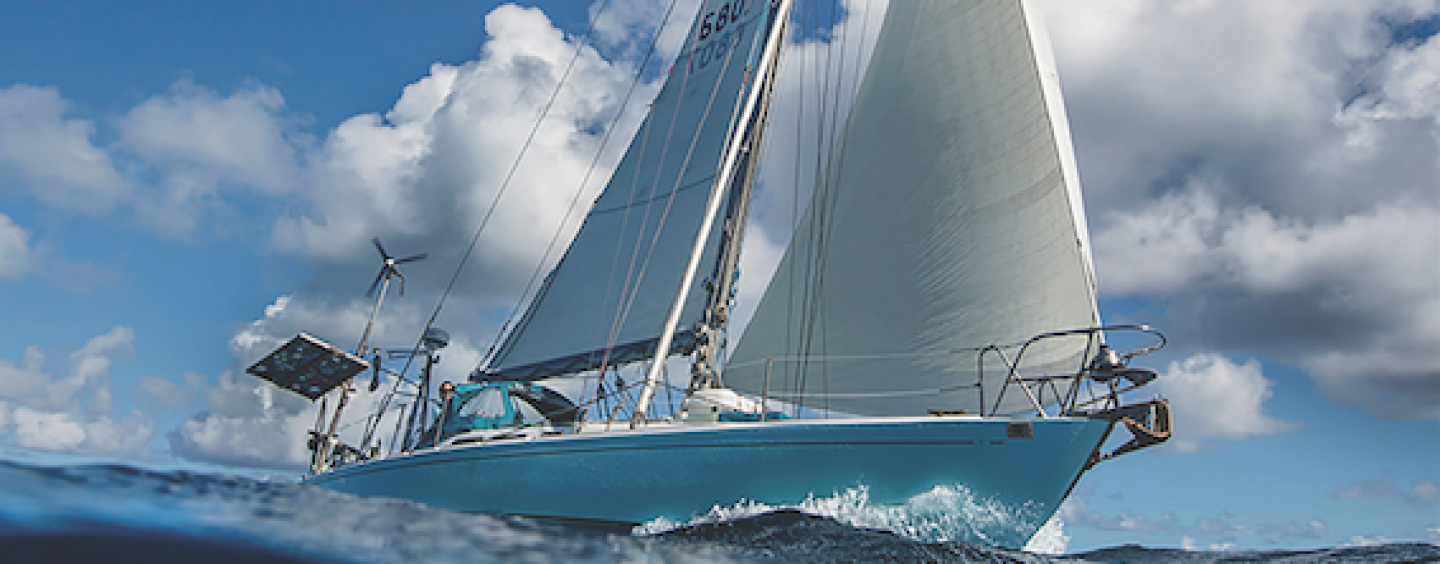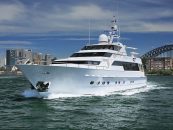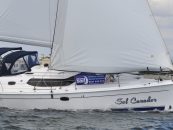Distinguishing A Great Cruising Sail From Average
Racing sailors don’t need convincing of the need for sails that are well designed and constructed because they know that’s what’s needed for achieving perfect trim if they’re going to enjoy success on the race course. Well, maybe there’s another definition of performance that we need to think about when you’re in cruising mode, one that doesn’t just put speed at the top of the priority list. Good sails still matter, and here we’ll explore some of the factors that go into creating a great cruising sail that will deliver you more reliability, longevity and, yes, more speed too! All factors that add up to a more enjoyable sailing experience, whether you’re racing or cruising.
Less Heel, More Speed – Synthetic polyester (polyethylene terephthalate), known to most of us as Dacron, heralded in a new era of sail construction that enabled sails to hold their original shape for much longer. They distorted far less under load, didn’t shrink the first time they got wet and had a much longer life.
While Dacron is still perhaps the most popular cloth in use today, over the past decade the racing world has embraced the development of composite membrane sails for all its superior properties. Just as Dacron delivered tangible benefits over more traditional materials, so do composite membrane sails take things to an even higher level.
The first thing you notice when you replace a Dacron sail with a composite membrane sail is how the boat heels less when the gust hits. Because the sail is stiffer and holds its shape much more effectively, the heeling moment of the wind transfers more directly into forward drive. The wind’s energy is being translated more efficiently into speed through the water. While you may or may not be that bothered by the increase in speed, less heel, and a flatter deck is something that will appeal to everyone on board. It’s safer and more comfortable.
Lasts longer – After thousands of miles of cruising, a Dacron sail will have likely reached the end of its life or be on its last legs. It will have stretched and become so deep as to have become unusable, while the equivalent composite membrane sail will have suffered approximately only a quarter as much. Ultra-violet resistance to tropical sun is also high on these latest generation sails. When you consider the impressive longevity of these sails, the dollars-per-year cost of modern sail technology starts to look very attractive indeed. That’s before you even factor in the performance benefits. And as we said earlier, when it comes to cruising we don’t just define performance by speed.
Four Factors that matter – There are four key areas for the cruising sailor to consider when identifying a good sail versus a bad sail:
1. Fit (2D geometry) – The starting place for the sail design project is to fill up the space available on the spars as much as possible. In the cruising world, it can be common to see ill-fitting sails – not reaching the top of the mast, headsail shy of filling the available space, and so on. You get the 2D geometry right and then put the three-dimensional shape onto the rig, and the 3D geometry changes the way the sail fills the space.
2. Form (3D Flying Shape) – The biggest driver of good performance versus bad performance is the aerodynamic (flying) shape of a sail that is built into the material with shaped seams or molded into the composite structure.
Mainsail twist is an interesting part of the engineering challenge that requires the designer to drill down into the interaction between the material properties and sail design. For most mainsails, when you ease the sheet the middle of the leech sags to leeward and the upper battens stay tight. If the material is too stretchy, or poorly oriented, the sail will get deeper in the middle and the draft will move aft in the top half of the sail as wind pressure increases. Those pressure-induced changes in the shape and depth will force the sailor to ease the mainsheet.
Easing the sheet closes off the slot between the main and jib, which will dictate that the jib sheet is also eased. This sequence of events explains why so many cruising boats ‘can’t point’ and why some sailors spend a lot of time with their sails fluttering and flapping, or they end up switching on the engine even in fresh breeze.
A well-designed sail aims for a progressive twist in the leech from the top to the bottom when the sheets are eased or when the sail sees an increase in pressure. We want the highest batten to be angled more to leeward than the one below it, and the next batten down more to leeward than the one below it, and so on, much like the wing of a bird deflects and twists on the down stroke. The twist profile is the BIG difference between a good and a bad mainsail.
After the design process, the sailmaker’s ability to replicate the theoretical shape and structure has everything to do with the construction techniques available. If you are simply cutting cloth off a roll and sewing it together, you are much more limited. The molded sail process and advanced composite construction makes it possible to place the materials exactly where they’re needed.
3. Structure (material properties) – The structure allows the sailmaker to introduce the properties into the sail that have been developed through the software design process. The latest composite materials offer the ultimate weight-to-stiffness ratio.
A stiffer sail will allow you to sheet harder, apply more pressure and deliver more driving force to the hull so your boat goes faster. A stiffer sail doesn’t get deeper with increases in wind pressure, so the boat heels over less. A more upright boat equates to a more comfortable ride, and also delivers greater forward motion (less leeway).
4. Finishing – One important yet often overlooked element is how quiet a sail is when it’s being used.
A low-stretch sail that fits the rig and has been designed to take advantage of the range of controls available can be set up flat and trimmed tightly so that the whole surface of the sail is pressurized and stable. There should not be any parts of the sail fluttering, flapping or panting as the boat moves through wind and waves. A good sail is a quiet sail.
Does your next sail tick the boxes?
The next time you’re about to place an order for a new sail, if you can be sure it will tick all the boxes listed in these four factors above, you know that you’re well on your way to ordering a good cruising sail. One that will deliver years of reliable and trouble-free service.
Interested in cruising sails for your multihull?
ben.kelly@northsails.com Phone: (07) 3396 5822
Published in print January-March 2023



























